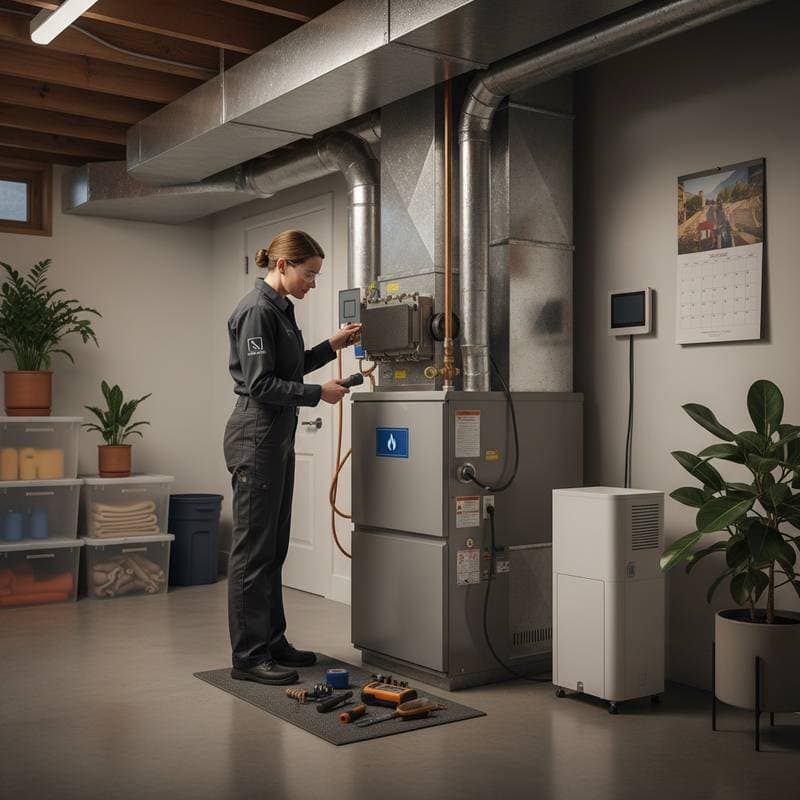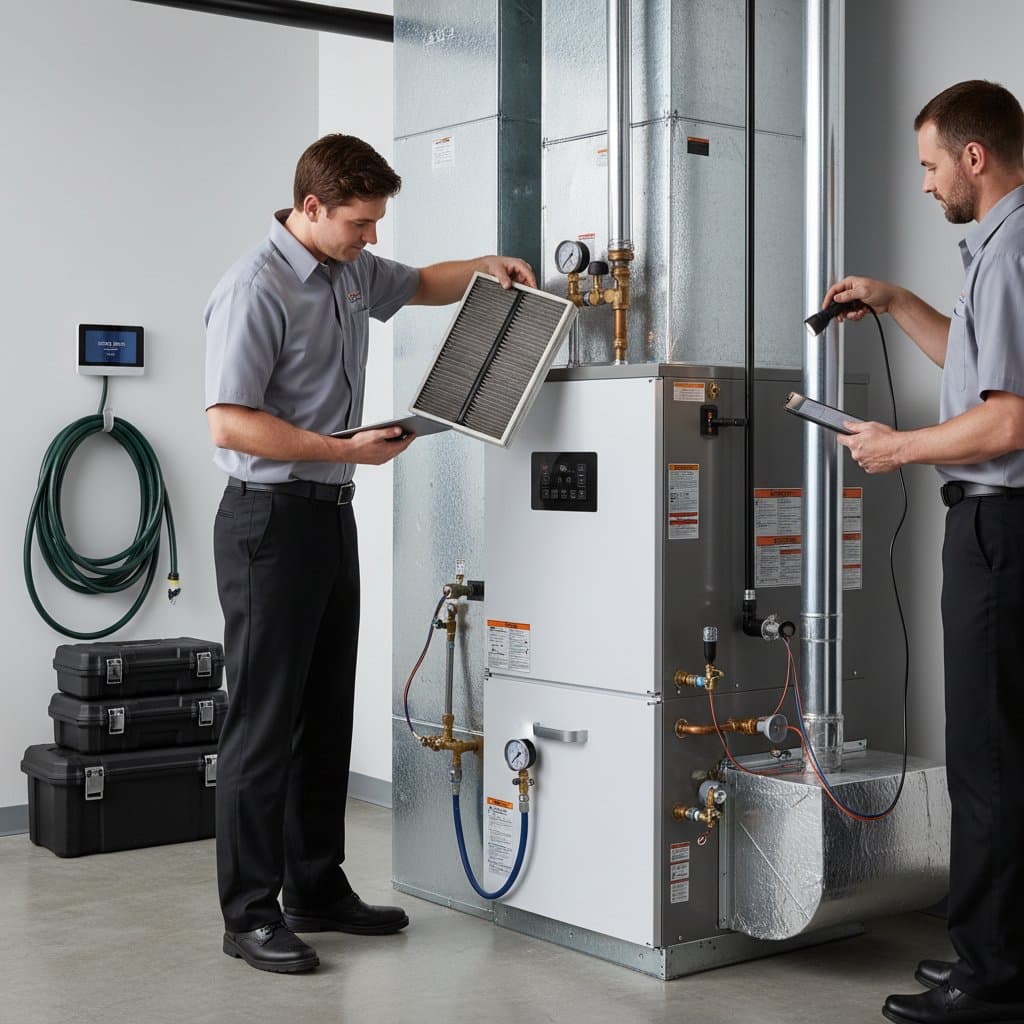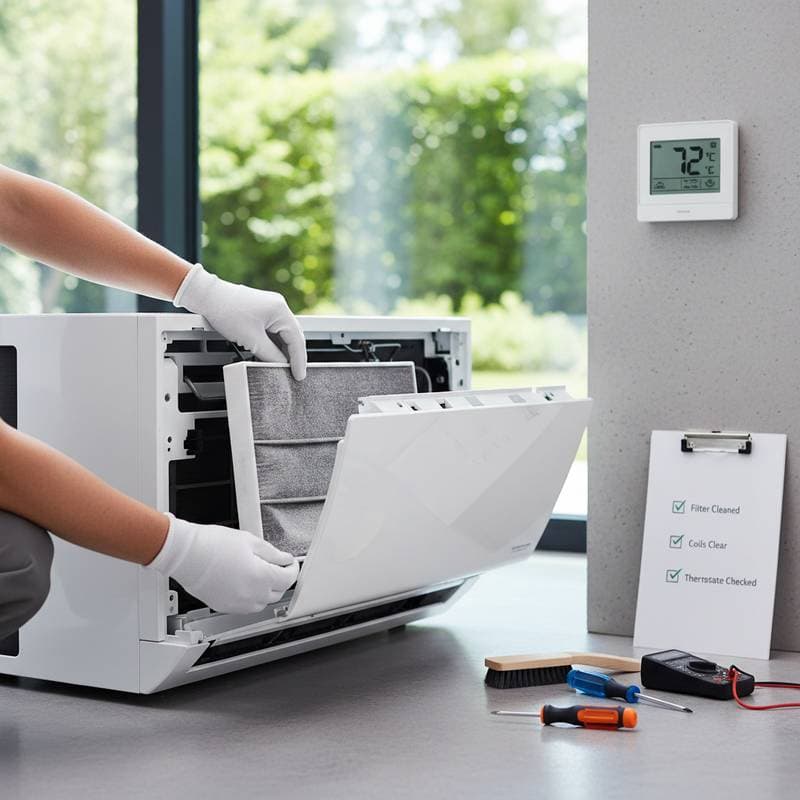How Summer AC Tune-Ups Save 20 Percent on Repair Costs
A hot afternoon quickly becomes uncomfortable when the air conditioner fails to deliver cool air. Homeowners often wait until such breakdowns occur before seeking assistance, yet a proactive summer tune-up avoids these crises. This maintenance acts as a comprehensive health assessment for the cooling system ahead of peak demand, ensuring comfort while minimizing repair expenses through professional evaluations and basic homeowner actions.
The Importance of Summer AC Maintenance
Air conditioners face maximum strain during summer, with continuous operation stressing all components. Without regular care, minor problems such as loose wiring, blocked drain lines, or insufficient refrigerant escalate into significant malfunctions. Early detection through a tune-up halts progression to costly failures.
Data from the National Comfort Institute indicates that well-maintained systems operate up to 20 percent more efficiently than those lacking attention. This efficiency translates to reduced energy bills and extended equipment durability. Central air units typically last 12 to 15 years, though regular servicing often extends performance well beyond this period.
Components of a Professional Tune-Up
A certified HVAC technician employs a systematic checklist to examine and evaluate the entire cooling setup. Request a detailed written report to document all performed actions. A complete tune-up generally encompasses the following areas:
Electrical and Safety Evaluations
Loose electrical connections generate excess heat, potentially causing breaker trips or component damage. Technicians perform these steps:
- Secure and examine all wire terminals
- Measure voltage and amperage for the compressor and fan motors
- Assess capacitors and contactors for wear
- Confirm functionality of the disconnect box and safety switches
If a burning odor appears or a breaker trips upon startup, shut off the unit and contact a professional without delay.
Refrigerant Assessment and Pressure Verification
Refrigerant flows through the coils to facilitate heat absorption and release. Imbalanced levels impair operation and risk freezing the evaporator coil. Technicians gauge high-side and low-side pressures against manufacturer guidelines.
In typical systems, suction pressure ranges from 60 to 80 psi, while discharge pressure spans 200 to 250 psi, adjusted for outdoor temperatures. Deviations suggest leaks or improper charging, requiring immediate correction.
Coil Maintenance
Accumulated dirt insulates coils, compelling the system to labor excessively. Thorough cleaning of both coils ranks among the tune-up's critical elements.
- Evaporator coil: Positioned within the air handler, this component demands removal of dust and organic residues. Technicians apply a fin comb or gentle brush to clear buildup without distorting the fins.
- Condenser coil: Situated in the outdoor unit, it gathers foliage, clippings, and pollen. Cleaning involves internal rinsing with low-pressure water or a mild, non-acidic solution.
Spotless coils enhance cooling performance by up to 15 percent.
Airflow and Blower Assessment
Limited airflow diminishes comfort and accelerates wear. Technicians quantify static pressure in ducts, review the blower wheel, and verify motor speed alignment with system needs.
Optimal airflow measures approximately 400 cubic feet per minute (CFM) per ton of cooling capacity. For a three-ton unit, output below 1,200 CFM signals the need for duct cleaning or motor tuning.
Condensate Drain and Pump Review
Cooling condenses indoor humidity on the coil, which drains via a PVC line. Blockages lead to overflows that harm ceilings or floors. Technicians flush the line with a specialized solution and ensure a minimum slope of one inch per 10 feet.
Thermostat Adjustment
Inaccurate thermostats trigger inefficient cycling or inconsistent temperatures. Technicians measure the temperature split between supply and return air, targeting 16 to 22 degrees Fahrenheit. Adjustments or upgrades to programmable or smart models follow if necessary.
Essential Homeowner Maintenance Tasks
Professional services provide a strong foundation, but routine homeowner efforts sustain peak operation between visits.
Air Filter Replacement
Clogged filters restrict airflow and promote coil icing, representing the leading cause of performance issues. Check filters each month and replace every one to three months based on usage. Select filters matching the frame size and airflow direction indicators; high-efficiency options may require 4-inch or 5-inch depths.
Outdoor Unit Clearance
The condenser requires 24 inches of unobstructed space on all sides for effective ventilation. Regularly trim vegetation, clear debris, and avoid placing objects against the unit.
Vent and Register Inspection
Ensure all room vents remain open and free of obstructions during a walkthrough. Blocked registers disrupt balance and elevate duct pressures.
Energy Usage Monitoring
Unexpected spikes in electricity consumption indicate emerging faults. Review bills against prior periods; persistent increases under similar conditions warrant a professional inspection.
Evaluating Tune-Up Expenses and Benefits
Professional tune-ups range from 100 to 200 dollars. This investment frequently averts repairs exceeding ten times the cost, such as compressor replacements at 1,200 to 2,500 dollars or blower motors at 400 to 700 dollars.
Efficiency gains further justify the expense, with optimized systems lowering cooling bills by 10 to 25 percent according to local conditions. Seasonal savings often offset the service fee entirely.
Distinguishing Professional from DIY Maintenance
Certain tasks suit homeowner capabilities, while others demand expertise and equipment.
Suitable for DIY:
- Filter changes
- Unit cleaning and debris removal
- Thermostat setting verification
- Gentle outdoor coil rinsing
Require professional handling:
- Refrigerant diagnostics
- Electrical examinations
- Internal coil servicing
- Airflow and pressure measurements
Undertaking complex work without certification risks warranty invalidation and safety dangers. Consult an HVAC specialist for uncertainties.
Avoidable Errors That Reduce AC Longevity
Numerous service requests stem from preventable lapses. Address these common issues:
- Omitting yearly tune-ups, permitting minor faults to worsen
- Installing filters with excessive MERV ratings, which impede airflow
- Positioning furniture over return vents, overloading the blower
- Placing thermostats near heat sources like windows or lights, skewing readings
- Managing refrigerant without EPA certification, an illegal and hazardous practice
Steering clear of these extends system life by years.
Prioritizing Accessibility and Comfort
Households with elderly members or heat-sensitive individuals rely on stable indoor climates. Programmable thermostats automate adjustments for effortless comfort.
In multi-level homes, zoning systems with independent dampers and controls prevent uneven temperatures and ease main unit demands.
For those with mobility challenges, position the outdoor unit to allow a 36-inch access path, facilitating safe maintenance.
Basic Tools for Home AC Upkeep
Stock these essentials for straightforward inspections:
- Screwdriver set for panel access
- Fin comb for coil repair
- Soft brush for debris removal
- Hose with adjustable nozzle
- Wet-dry vacuum for drain clearing
- Digital thermometer for temperature checks
Disconnect power at the breaker prior to any internal access.
Mechanisms by Which Tune-Ups Avert Major Failures
All severe AC issues originate from overlooked subtleties. Marginal refrigerant shortages overwork the compressor, generating heat that degrades windings over time. Early pressure checks enable leak repairs and recharges, averting motor burnout.
Filthy coils elevate pressures by 50 psi or greater, taxing seals and valves. Prompt cleaning maintains equilibrium and safeguards components. Annual documentation also upholds warranty terms, as manufacturers mandate regular servicing.
Steps to Schedule Your Tune-Up
Contact a licensed HVAC provider now to book a summer assessment. Select technicians with strong local reputations and verify credentials. Post-service, implement the outlined homeowner routines to maximize benefits and ensure seamless cooling all season.





